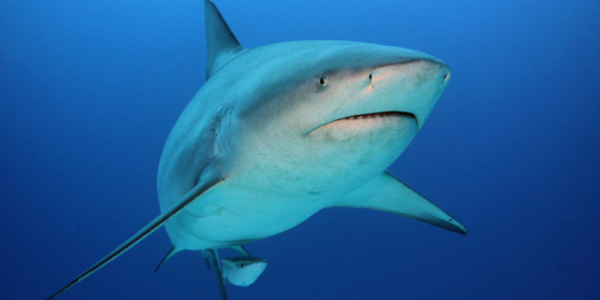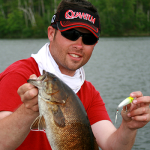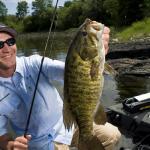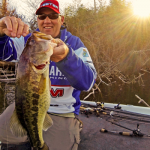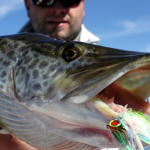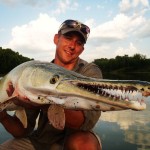By John Cunningham
The scientific method is a somewhat structured way of solving problems. The interpretation of the scientific method that this paper will employ is viewing it as a path hypothesizing, testing, then intelligently correcting the hypothesis if it does not work. Science, however, does not have a monopoly on this method, and it can be readily applied to a plethora of other disciplines whether academic or recreational. For my purposes, I am going to apply it to a deep-sea fishing trip.
My goal, AO, is to catch a shark. I need to have a good line, and good bait to catch the shark. For clarification, a good line is one that is strong enough to be able to hold the fish’s mass and reel it in effectively. A good bait is one that will attract and entice the target species to the hook, so it can be caught. My hypothesis is to start with a line of a breaking strength (breaking strength indicates with how much force a fish has to fight before the line breaks) of eight pounds, and a lure that is a small, plastic, neon-colored, worm-shaped lure. I cast the line, and waited for the results. I felt a bite, yanked the hook, and reeled my catch in. What I caught was a fish that was the size of a Smallmouth Bass. My AO was a shark, and My PO was a bass-size fish. The CAO cannot be measured exactly but I needed a fish that weighed ninety-eight pounds more. I decided to intelligently correct my hypothesis. Sharks are large predators, and they eat substantial size prey. I used a small lure, and caught a small fish.
Therefore, I will use a bigger lure that is more the size of a shark’s normal prey. Also, sharks do not hunt for worms, because worms are small and foreign to the deep sea. For my PH, it follows that my lure should look more like what a shark would hunt, a fish. I put a blue plastic lure that was the size and shape of a perch on my hook, and cast it out. I eventually got a bite, and it was a bigger and stronger fish. I was fighting with it for a while, and I started to pull it out of the water. I saw it and could tell it weighed about twenty pounds, but as it was coming up my fishing line broke. I had slightly corrected the lure, but had not corrected at all the fishing line. The fish had gotten bigger with the bigger bait, but I would need a stronger line to match the bigger size. I deduced that I needed to correct my line by strengthening it. My EH is to use a line with a thirty pound breaking strength to compensate for the bigger fish’s weight. My second hypothesis is to use a larger, plastic, fish-shaped lure, and a line with a breaking strength of thirty pounds.
It was time to test my second hypothesis. I had my stronger line, and I was going to keep my lure to see if I could catch something even bigger with it. I cast my line back in, and waited until I received yet another bite. The line was much stronger, and I nearly yanked it out of the water. Sadly, it was the same fish that had broken off earlier. My AO of the shark fell short once again, because my PO was a twenty-pound fish. The CAO was I needed a fish that was a shark and weighed eighty pounds more. I realized that I needed once again to intelligently change the bait I was using. Sharks were fairly smart creatures, and had bigger brains than the twenty-pound fish I was catching. It would make sense that they could more readily detect a fake fish. My PH was to use a live fish of the same size, so the shark would not be deterred by the fake bait. I got a bite this one was really big it could be it. As I was pulling it up I saw it was a barracuda (which has about the same poundage as the kind of shark I was looking to catch), but again as I was pulling it up my line broke. Although I had strengthened the line, I had not strengthened it enough. The barracuda’s weight broke the line. I needed to correct this mistake, and it was obvious I needed to increase the line strength even more. Also, I would use a bright colored line, so I could see what kind of fish was coming for my bait. This would help prevent me from reeling in other types of fish. My EH was to use the yellow, high visibility, sixty-pound breaking strength line they had on the boat. My third hypothesis was to use the live fish bait, and a bright, sixty-pound breaking strength line to catch the shark.
I was feeling very confident of acquiring my AO with my third hypothesis with the intelligent correction I had done. Again I cast my line. This time the wait was a substantial amount longer than I had been accustomed to. The water was very clear and I had a high-visibility line, so I could see my fishing spot fairly well. Suddenly, I became very excited, because the exact type of shark I had been searching for was in the vicinity of my bait. The shark was swimming in the area, but paid no attention to my baitfish. I looked around and realized there were a very many fish in that area, and the shark was distracted by them. My AO was catching a shark, and My PO was a shark that was not attracted to my bait. My CAO was not having the shark caught on my hook. I needed to correct my baiting technique to attract the shark to my fish from the others. It seemed to be common knowledge that sharks were attracted to blood. I could use the blood of the fish to attract the shark. My PH was to cut the fish so it would bleed, and the shark would then be more attracted to it. I reeled in my bait and cut it deep enough to start bleeding, but not deep enough to kill it. I then cast my line out again awaiting the results. My eyes followed the bright yellow of my line to the spot where it had landed. As soon as the fish had settled, the shark darted towards the blood and my bait. I finally felt my intelligent correction had paid off, but just as the shark was about to devour my bait get my hook with it his eyes caught something and he swam off. This was quite the disappointment. What happened where the shark would stop in mid bite and leave. I obviously need to correct myself once again. It could not have been the bait, because the shark attraction to it was instantaneous, and I had not seen prey so stunning that would make the shark rush to it without having my fish first. A shark is very much a predatory animal, and would not have to run from another predator. Then I realized the most logical explanation was my line. I was using a high-visibility line, so I could more easily see the line. It would only make sense that the shark could more easily see it too, and feel suspicious. My EH was to change my line from visibility to a darker color, so it would not be as visible. My fourth hypothesis was to have my baitfish be alive but cut so it could bleed, and to have a sixty-pound breaking strength with a darker color.
I loaded on my new line and cut another fish to put on my hook, and cast off. Once again, the shark darted right over to my bleeding bait and not seeing my line now, took a bite right into it. The shark was hooked. He put up quite a struggle, but I pulled it in. My AO matched my PO, and I think I had enough fishing and intelligent correction for the day.
The scientific method is a structure that is sometimes question by philosophers and scientists alike. However, using intelligent correction to solve problems is structured, and does work. Science does not have domination of this method, and it has been demonstrated to be easily applied to even the very leisurely hobby of fishing. Indeed, it would be wise to more often use the scientific method in our daily lives.
In memoriam of John Cunningham
John Cunningham (1987-2014) is a good friend of Fishing-Headquarters editor In-chief Andrew Ragas and is a novice angler who wrote this piece in spring semester 2006 at THE Loyola University Chicago. All information in article is from the beginner angler, John. Even though we were never able to go on a trip together, I know he’s somewhere up there catching sharks and scouting new oceans for me. Till we meet again, friend. We miss you buddy.


